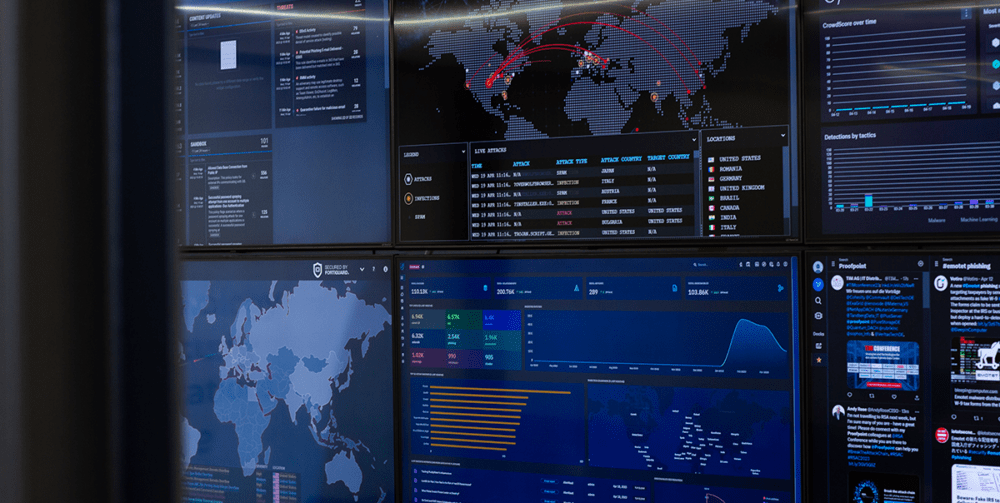Short Summary
- SOCs provide a dedicated resource to protect organisations from threats and manage secure systems.
- SOC teams consist of different security professionals with specific roles, such as Security Engineers, Analysts, Threat Hunters & Forensic Investigators.
- Automation, monitoring content/alert ranking & leveraging managed security service providers are key best practices to build and maintain a successful SOC.
Understanding the Security Operations Centre (SOC)
The SOC serves as a centralised team to protect organisations from cyber threats, manage secure systems and unify security tools for better protection.
To maintain their organisation’s strong security posture, the SOC works in real-time monitoring, detecting and responding to potential incidents while constantly implementing improvements and learnings to reduce their attack surface.
A SOC is a team of security specialists who are dedicated to proactively monitoring for cyber threats and responding quickly if any threats occur. They can be an internal team or an outsourced resource depending on a company’s requirements. But the bottom line is, their sole purpose is to defend an organisation’s digital assets.
The Core Functions of a Security Operations Centre
The cornerstone of any SOC is a team made up of skilled security professionals responsible for performing crucial tasks involving continuous monitoring, threat detection and incident response.
The main functions of a security operations centre include:

Continuous Monitoring
Continuous monitoring is a must for SOC teams in order to maintain and protect the organisation’s IT environment. As part of this process, security professionals make use of different tools such as intrusion prevention systems (IPS), Security Information and Event Management (SIEM) solutions, log analysis utilities, etc., so they can detect intrusions or other cyber threats quickly and effectively.
To stay one step ahead of malicious actors looking to exploit system vulnerabilities, it’s essential that organisations keep their networks constantly monitored. With cutting edge technology, these efforts are made more efficient – allowing SOC teams to recognise suspicious behaviour quickly before any serious damage is done.

Threat Detection
Threat detection is a critical activity for the SOC, which requires analysing data from various sources to identify and prioritise potential risks. Utilising tools such as SIEMs, XDRs, and threat intelligence feeds are essential in uncovering malicious activities that could be used against an organisation’s security measures. Firewalls can also help safeguard networks by restricting unauthorised access by enforcing safety rules established within the system.
Alongside technical solutions like those mentioned above, threat intelligence must not be overlooked when it comes to the effective detection of threats. Staying informed on evolving advanced threats allows SOC teams to develop approaches designed to pre-emptively recognise any hazards before they endanger corporate assets or infringe upon company confidentiality policies.

Incident Response
The primary role of the SOC team is to handle security incidents in a way that leads to minimal disruption for business operations. They must contain, mitigate and recover from said threats while also making sure stakeholders are informed appropriately. This process requires fast action on behalf of Security Analysts who assess the severity and take steps towards containment when necessary.
Specifically, incident response may include isolating affected endpoints or applications. Suspending compromised accounts, deleting malicious files, and running anti-virus & anti-malware software. The team oversees this whole procedure, ensuring that all aspects – detection through recovery, are taken care of effectively whilst maintaining communication between parties involved in the resolution effort.
What are the different roles within a SOC Team and their key responsibilities?
A SOC requires a diverse set of security professionals, each with their own dedicated responsibilities to maintain the organisation’s safety.
SOC teams generally consist of the following roles:
- SOC managers – SOC managers are in charge of the team’s operations and finances.
- Engineers – Security engineers focus on crafting system architecture safeguards.
- Analysts – Monitoring for events that could lead to breaches, as well as providing recommendations on remediation measures if an incident occurs
- Threat hunters – Threat hunters aim to identify known and unknown risks before they become more serious issues.
- Forensic investigators – Forensic investigators trace incidents back so it can be determined where exactly things went wrong thus preventing similar occurrences from occurring again later down the line.
All these roles ultimately combine into one comprehensive unit, that operates efficiently and effectively to prevent and respond to cyber threats in real time. By having dedicated roles, organisations can ensure the highest level of protection, ensuring skilled individuals are focusing on objectives and outcomes.



